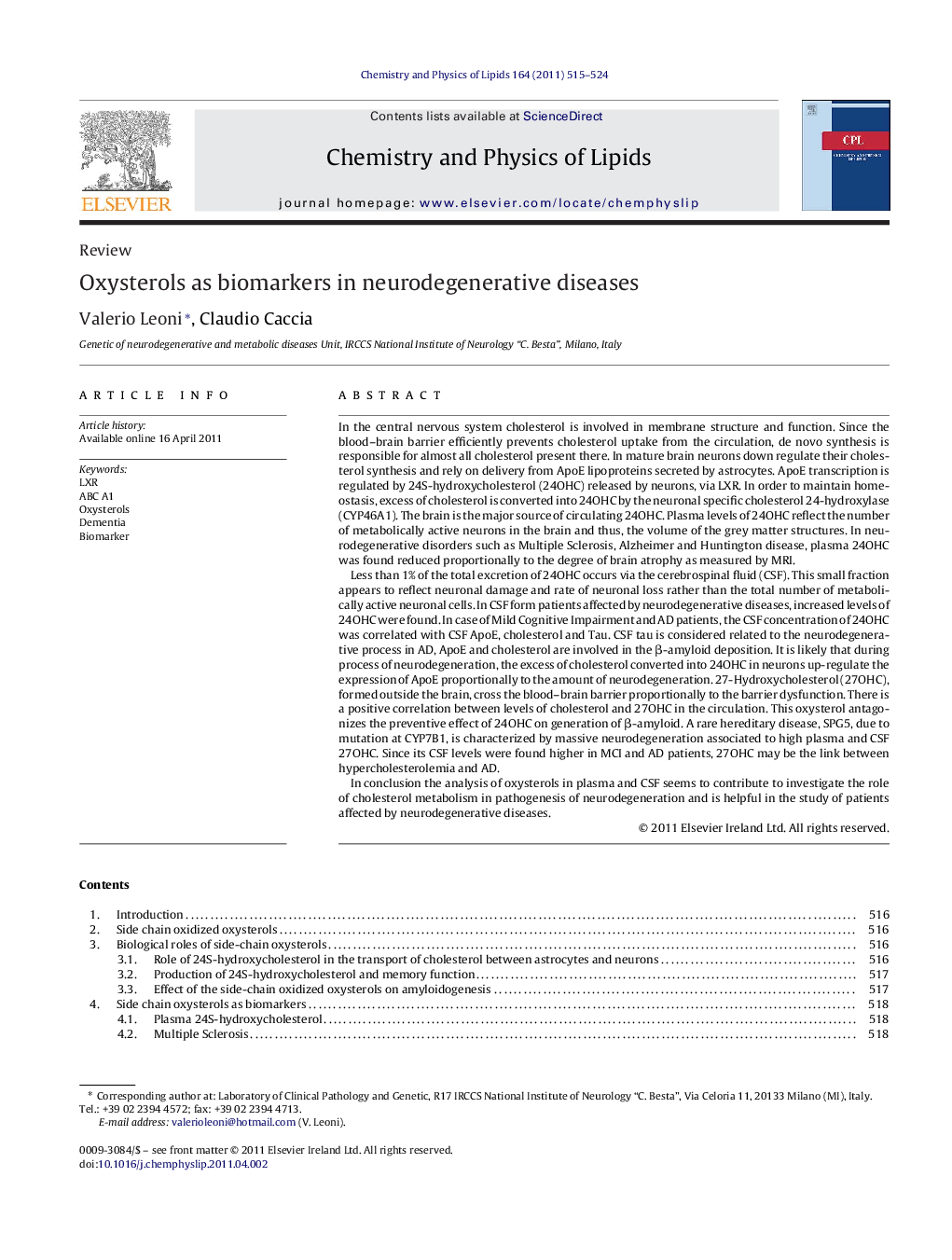| کد مقاله | کد نشریه | سال انتشار | مقاله انگلیسی | نسخه تمام متن |
|---|---|---|---|---|
| 1253373 | 1496318 | 2011 | 10 صفحه PDF | دانلود رایگان |

In the central nervous system cholesterol is involved in membrane structure and function. Since the blood–brain barrier efficiently prevents cholesterol uptake from the circulation, de novo synthesis is responsible for almost all cholesterol present there. In mature brain neurons down regulate their cholesterol synthesis and rely on delivery from ApoE lipoproteins secreted by astrocytes. ApoE transcription is regulated by 24S-hydroxycholesterol (24OHC) released by neurons, via LXR. In order to maintain homeostasis, excess of cholesterol is converted into 24OHC by the neuronal specific cholesterol 24-hydroxylase (CYP46A1). The brain is the major source of circulating 24OHC. Plasma levels of 24OHC reflect the number of metabolically active neurons in the brain and thus, the volume of the grey matter structures. In neurodegenerative disorders such as Multiple Sclerosis, Alzheimer and Huntington disease, plasma 24OHC was found reduced proportionally to the degree of brain atrophy as measured by MRI.Less than 1% of the total excretion of 24OHC occurs via the cerebrospinal fluid (CSF). This small fraction appears to reflect neuronal damage and rate of neuronal loss rather than the total number of metabolically active neuronal cells. In CSF form patients affected by neurodegenerative diseases, increased levels of 24OHC were found. In case of Mild Cognitive Impairment and AD patients, the CSF concentration of 24OHC was correlated with CSF ApoE, cholesterol and Tau. CSF tau is considered related to the neurodegenerative process in AD, ApoE and cholesterol are involved in the β-amyloid deposition. It is likely that during process of neurodegeneration, the excess of cholesterol converted into 24OHC in neurons up-regulate the expression of ApoE proportionally to the amount of neurodegeneration. 27-Hydroxycholesterol (27OHC), formed outside the brain, cross the blood–brain barrier proportionally to the barrier dysfunction. There is a positive correlation between levels of cholesterol and 27OHC in the circulation. This oxysterol antagonizes the preventive effect of 24OHC on generation of β-amyloid. A rare hereditary disease, SPG5, due to mutation at CYP7B1, is characterized by massive neurodegeneration associated to high plasma and CSF 27OHC. Since its CSF levels were found higher in MCI and AD patients, 27OHC may be the link between hypercholesterolemia and AD.In conclusion the analysis of oxysterols in plasma and CSF seems to contribute to investigate the role of cholesterol metabolism in pathogenesis of neurodegeneration and is helpful in the study of patients affected by neurodegenerative diseases.
► Excess of cholesterol is transformed in 24S-hydroxycholesterol (24OHC) by brain neurons.
► Almost all the plasma 24OHC in humans has brain origin.
► Plasma 24OHCis reduced in neurodegenerative diseases proportionally to brain atrophy.
► 24OHC dependent expression of ApoE is a mechanism to control neurodegeneration.
► CSF 27-hydroxycholesterol depends by the blood–brain barrier function.
Journal: Chemistry and Physics of Lipids - Volume 164, Issue 6, September 2011, Pages 515–524